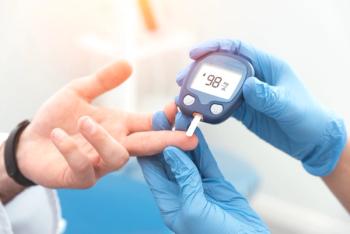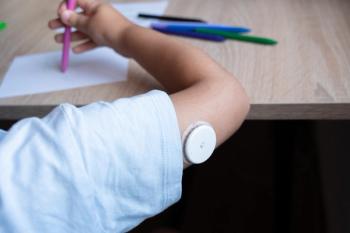Takeaways:
- Approximately half of unintentional firearm injury deaths among children in the United States occur in their own homes, with the weapon often loaded and accessible to the child.
- Unintentional injuries, including firearm-related incidents, are a leading cause of death among children in the United States.
- In 2021, about 30 million children lived in homes with firearms, and approximately 4.6 million households reported storing firearms loaded and unlocked.
- A study analyzed unintentional firearm injury deaths using data from the CDC’s National Violent Death Reporting System (NVDRS) from 2003 to 2021.
- Of the 1262 fatal unintentional firearm injury cases among children aged 0 to 17 years, 83.1% occurred among boys, with children aged 0 to 5 years accounting for 29.1% of deaths.
A recent study published in the Centers for Disease Control and Prevention’s (CDC) Morbidity and Mortality Weekly Report (MMWR) revealed that approximately half of unintentional firearm injury deaths among children in the United States occur in their own homes, with the weapon often loaded and accessible to the child.
Unintentional injuries are already a leading cause of death among children in the United States, and firearms are a leading injury method. Among infants, unintentional injury is the 4th leading cause of death among infants, and top cause of death for children and adolescents aged 1 to 17 years.
Unsecured (unlocked and loaded) firearms are associated with risk for unintentional death. According to the CDC, most unintentional firearm injuries among children happen in their own home.
In 2021, approximately 30 million children lived in homes with firearms. That includes the 4.6 million households that reported the storing of firearms loaded and unlocked. The study published in MMWR analyzed unintentional firearm injury deaths using data from the CDC’s National Violent Death Reporting System (NVDRS) for 49 states, District of Columbia, and Puerto Rico from 2003 to 2021.
According to the report, an unintentional firearm injury death was defined as, “resulting from a penetrating injury or gunshot wound from a weapon that uses a powder charge to fire a projectile when there was a preponderance of evidence that the shooting was not intentionally directed at the victim.”
Fatal unintentional firearm injury cases for the study were identified based on unintentional firearm injury deaths, homicides, and undetermined intent deaths.
A total of 1262 fatal unintentional firearm injury cases were identified between 2003 and 2021 among children aged 0 to 17 years, and a majority (83.1%) occurred among boys. Children aged 0 to 5 years accounted for 29.1% of deaths, followed by children aged 6 to 10 years (14.0%), 11 to 15 years (33.0%), and 16 to 17 years (23.9%).
“This is not a surprise to me that we hear about children all the time picking up a gun in the house and shooting someone else accidentally or shooting themselves accidentally,” Steven Selbst, MD, attending physician, pediatric emergency medicine, Nemours/Alfred I. duPont Hospital for Children, Wilmington, Delaware, told Contemporary Pediatrics.
Most of the victims were in 1 of the following 3 racial and ethnic groups: non-Hispanic Black or African American (39.9%), Hispanic or Latino (10.7%), and non-Hispanic White (42.2%).
Approximately half (52.9%) of fatal unintentional firearm injuries among children were inflicted by another person, with the highest proportion occurring among victims aged 6 to 10 years (64.2%). Following this age group were those aged 11 to 15 years (61.4%), and 16 to 17 years (60.0%).
Overall, self-inflicted injuries accounted for 37.8% of deaths, with the proportion of injuries that were self-inflicted occurring most in children aged 0 to 5 years (57.8%). Of victims aged 6 to 10 years, 11 to 15 years, and 16 to 17 years, most shooters (63.4%) were aged 11 to 17 years.
Children aged 0 to 5 years were most frequently shot by another child in their own age group (37.2%).
Of cases in which the shooter’s relationship to the victim was known, the CDC states 41.7% were shot by a friend or acquaintance, 31.8% by a sibling, 11.8% by another relative, and 7.3% by a parent.
Most of the victims fatally shot were at a house or apartment (85.5%), including 55.6% that occurred in their own home. The most common precipitating circumstance was the shooter playing with or showing the firearm to another person. This occurred in 66.6% of victims.
After this, 21.3% unintentionally pulled the trigger, 20.3% thought the firearm was unloaded, the safety was on, or the magazine was disengaged (20.5%), and 10.6% had mistaken the weapon for a toy.
In 34.1% of all incidents, another child or other children were at or witnessed the fatal event. Of the firearms that inflicted the fatal injuries, 44.6% belonged to a parent of the shooter, and among known storage information cases, firearms were stored loaded and unlocked in 73.8% and 76.2% of incidents, respectively.
Of firearms that were stored unlocked, and for which loaded status was reported, 90.6% of firearms were stored loaded.
“I think these injuries in particular are tragic, these unintentional ones, because they are preventable,” Selbst said. “If parents would lock the gun or keep the gun stored without the ammunition, it would be preventable, but parents don't do that. I think the authors of this study pointed that out. Parents are afraid that, ‘Well, if I lock the gun and there's no ammunition in the gun, I won't have it available to me in an emergency when I need it.’ But the fact is, it's much more likely your child is going to die from that unlocked loaded gun, than you're going to use it in an emergency on an intruder or something like that. So, children are really at greater risk for death when parents don't lock the guns and don't store the ammunition separately from the gun.”
The most common places where the unlocked firearm was accessed were inside or on top of a nightstand, under a mattress or pillow, or on top of a bed (30%), on top of a shelf or in a closet (18.6%), and inside a vehicle (12.5%).
“That’s what we see,” added Selbst. “The child picks it up on a shelf, on the bed, under the pillow, or under the bed and parents think that it's hidden from the child. But a young child finds that gun and thinks it's a toy. There's a misbelief that all kids will know the difference between a gun and a toy, but that isn't true. There are studies to show that that isn't true.”
Handguns made up 74.0% of firearms used in the unintentional firearm injury deaths of children.
Click here, or on the image below to watch the full, video interview with Steven Selbst, MD:
Reference:
Unintentional firearm injury deaths among children and adolescents aged 0-17 years – National Violent Death Reporting System, United States, 2003-2021. Morbidity and Mortality Weekly Report. December 15, 2023. Accessed January 15, 2024. https://www.cdc.gov/mmwr/volumes/72/wr/mm7250a1.htm?s_cid=mm7250a1_e&ACSTrackingID=USCDC_921-DM118808&ACSTrackingLabel=This%20Week%20in%20MMWR%3A%20Vol.%2072%2C%20December%2015%2C%202023&deliveryName=USCDC_921-DM118808















